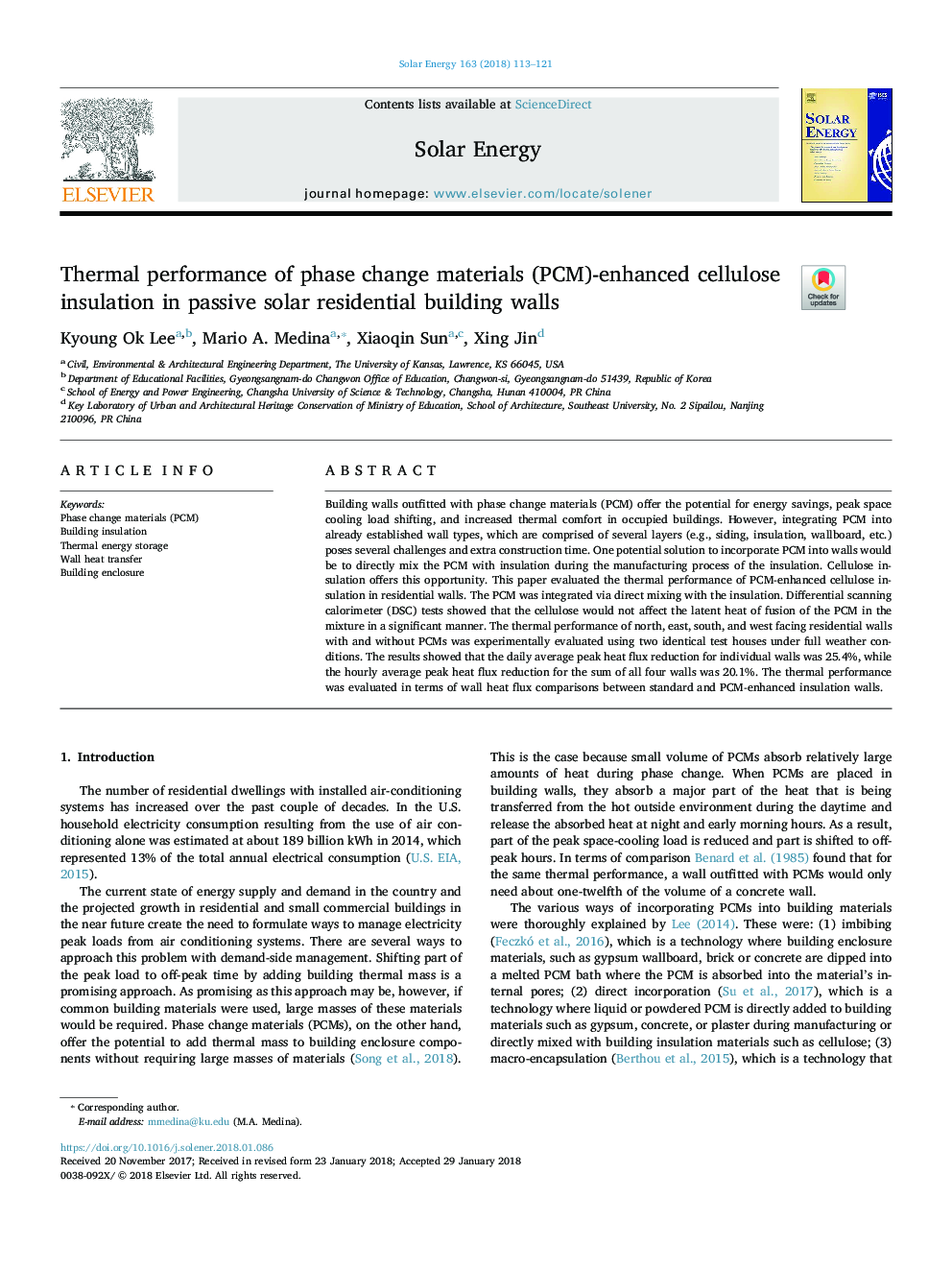| Article ID | Journal | Published Year | Pages | File Type |
|---|---|---|---|---|
| 7935495 | Solar Energy | 2018 | 9 Pages |
Abstract
Building walls outfitted with phase change materials (PCM) offer the potential for energy savings, peak space cooling load shifting, and increased thermal comfort in occupied buildings. However, integrating PCM into already established wall types, which are comprised of several layers (e.g., siding, insulation, wallboard, etc.) poses several challenges and extra construction time. One potential solution to incorporate PCM into walls would be to directly mix the PCM with insulation during the manufacturing process of the insulation. Cellulose insulation offers this opportunity. This paper evaluated the thermal performance of PCM-enhanced cellulose insulation in residential walls. The PCM was integrated via direct mixing with the insulation. Differential scanning calorimeter (DSC) tests showed that the cellulose would not affect the latent heat of fusion of the PCM in the mixture in a significant manner. The thermal performance of north, east, south, and west facing residential walls with and without PCMs was experimentally evaluated using two identical test houses under full weather conditions. The results showed that the daily average peak heat flux reduction for individual walls was 25.4%, while the hourly average peak heat flux reduction for the sum of all four walls was 20.1%. The thermal performance was evaluated in terms of wall heat flux comparisons between standard and PCM-enhanced insulation walls.
Keywords
Related Topics
Physical Sciences and Engineering
Energy
Renewable Energy, Sustainability and the Environment
Authors
Kyoung Ok Lee, Mario A. Medina, Xiaoqin Sun, Xing Jin,
